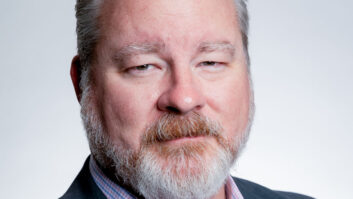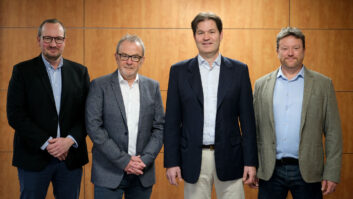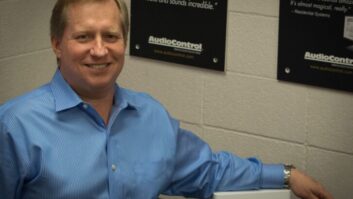Those hard-to-find air conditioners that required retailers to scramble during the late spring and early summer heat waves are now sitting untouched on store shelves, retailers report.
Yet, regardless of July and August temperatures falling short of expectations, some retailers estimate their sell-throughs for the season at around 60-70 percent, thanks to early-summer demand.
Indeed, despite a 50 percent falloff in July sales, season-to-date retail purchases are off only 3 percent from the comparable period last summer, reported Monica McKane of NPD/Intelect Market Tracking.
Similarly, AHAM statistics show that while factory sales of air conditioners plummeted nearly 49 percent in July, year-to-date shipments through the month, at 5.9 million units, were 6.1 percent higher than the same period last year.
“It was the best May and June [retailers] ever had, and it was the worst July and August,” said Marty Friedman, president of distributor Eastern Marketing Corp.
So, in the end, it can still be called a “good year,” said P.C. Richard & Son merchandising manager Doug Kelly, who added that it shouldn’t be compared to last summer, which was a chart-breaking season.
Often a really hot summer strips retailers of their supply and leads to a pent-up demand that hits manufacturers during the following preseason and early summer, said Vince Colligan, national sales manager at Friedrich.
As a result of last year’s heavy business, Friedrich added to its planned production as early as January and February. And when retailers still couldn’t get enough product in May and June, they turned to U.S.-based manufacturers, including Friedrich, which runs its factories 11 months out of the year.
“We were adding to existing production, especially in April and May, but even into July,” Colligan said. The vendor then cut back in mid-August, when it became apparent sales were declining. Still, the company estimates a sell-through in the mid-70 percentile, he said.
Boosting production midseason is a luxury only U.S. factories have, noted Dick Muchanic, assistant general manager for the home appliance group at Panasonic, whose air conditioner production is based in Malaysia. “We don’t get that second chance like some of the American companies do.”
But this year, that could be a blessing, as the U.S. manufacturers look for warehouse space to store the product they didn’t sell, or the product they sold on consignment.
John Marcella, owner of Marcella Appliances in Schenectady, N.Y., is among those dealers who may be sending some of their excess AC inventory back to vendors, as he experienced a 60-70 percent drop in sales from last year.
“Today I’m trying to figure out what I’m going to do with the 1,100 [units] I have left,” said Marcella, adding that he started out with an inventory of about 1,700 ACs. “Since July Fourth, we didn’t average one [air conditioner sale] a day.”
Some smaller appliance retailers pointed to a non-weather-related change as the reason for decreased sales: warehouse clubs.
More venues such as Sam’s and Costco are snagging AC business because consumers feel more comfortable buying and installing ACs without the help of an expert, Eastern’s Friedman said.
“More of the business was done through non-traditional sales [venues] than ever before,” he said of the membership clubs, where there are no salespeople to answer specific product questions.
John Froman, senior VP/merchandising at Circuit City, which is pulling out of the appliance market, said the company “will probably sell through in an orderly fashion. We don’t expect to be sending any back to vendors.”
Froman continued, “You go into the season hoping it will be great. So we bought aggressively with the understanding that they could go back or we could hold onto them until next season. We had enough in stock for the hot weather, but the hot weather never came.”
For those early-summer shoppers who needed to cool down, additional room air features such as remote controls and high energy efficiencies proved popular.
NPD/Intelect estimated a 500 percent increase in sales of remote control models since last year, or 6 percent of the total sold this year.
Air conditioners with the Energy Star label were also well received, especially in areas of the Northeast where local utilities offered rebate programs to customers, said Mel Hunger, executive director of NECO Alliance, the Nationwide-affiliated cooperative that covers the Northeast.
However, he said, New York City and New Jersey lagged behind some New England areas in offering such deals.
Energy-efficient models will gain popularity as more and more rebate programs are created “to placate the anger over increased energy bills,” added Friedrich’s Colligan.
Smaller units, within the 5,000 Btu to 8,000 Btu range, attracted the most interest, retailers said. Friedman estimated portable inside air conditioners garnered about 5 percent of the market.
Overall, the jury is still out on the summer of 2000, as August numbers are being compiled and retailers don’t fully know how they fared compared to last year.
“The warehouses are pretty much tapped out,” NECO’s Hunger said, “but we don’t know how much is left on the dealers’ shelves yet.”
And following the logic that a strong sales year creates a pent-up demand the following year, Panasonic’s Muchanic predicted, “I would forecast not as strong a year.”













